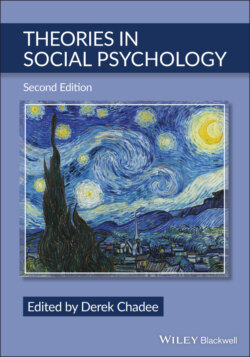Читать книгу Theories in Social Psychology - Группа авторов - Страница 25
Cognitive Dissonance and Reactance
ОглавлениеTo what extent is psychological reactance the same as cognitive dissonance? Do we always experience cognitive dissonance when we experience reactance? There are a number of commonalities between psychological reactance and cognitive dissonance. Both theories are motivational arousal theories emphasizing cognitive evaluation and gravitation toward psychological consistency. Arousal is a noxious state in both cognitive dissonance and psychological reactance theories, and a drive is buildup-directed to achieve a state of equilibrium (consonance or removal of threat to freedom). The importance of the cognition or threatened freedom determines the degree of cognitive dissonance or psychological reactance, respectively.
Several strategies are used to obtain equilibrium, and these methods vary from cognitive to behavioral to emotional changes. The reevaluation of importance, changing or adding new cognitions, adoption of new behavior, or changing existing behaviors are some of the common strategies of arousal reduction adopted by both theories. Neither theory is set up to be scientifically falsified, and therefore, in that sense, they cannot be considered scientific theories. Also, both theories are parsimonious. The difference in parsimoniousness is one of degree. However, there are some major differences.
Although both theories state that arousal is unpleasant, in the case of reactance the unpleasantness is always associated with negative emotions, unlike dissonance, in which both positive and negative emotions can be experienced. Sources of arousal are different: reactance involves a threat associated with a freedom, and therefore there is a “victim” and “victimizer” interaction, an externally social threatening factor, which is not the typical cognitive dissonance scenario. Therefore, there is a narrower scope of the application of reactance theory as compared to cognitive dissonance.
Wicklund (1974) was one of the first authors to attempt to address the issue of overlaps between the theories of dissonance and reactance. He argues that as far as decision making is concerned, cognitive dissonance occurs at the postdecisional stage but reactance at the predecisional stage. This sequential effect is a distinguishing difference. That is, prior to the reactant behavior is the motivational drive of psychological reactance. After the behavior, the decision is the postdecisional dissonance and dissonance reduction to justify the committed action. The force compliance studies of dissonance (e.g., Festinger & Carlsmith, 1959) and the barrier studies of reactance research provide a conceptually similar situation. However, Wicklund (1974) advocates that the difference between these groups of studies lies in the pre-decisional making without a behavioral commitment in reactance and the postdecisional dissonance as a result of behavioral commitment. However, dissonance is not only experienced in postdecisional situations. The threat to remove a freedom or the actual removal of a freedom is inherently a dissonant phenomenon. In fact, Wicklund (1974, p. 57) acknowledges this:
There is a parallel between the two theories when simple statements of preference are made, independent of whether or not those statements constitute absolute commitments. Dissonance theory allows that the statement will produce dissonance and regret (convergence) while reactance theory indicates that the preference statement will threaten freedom and thereby result in convergence.
Therefore, if there is an overlap between reactance and dissonance the investigation of the neurosocial psychological processes has to be evaluated. However, it should be remembered that reactance theory, from its genesis, had conceptual similarities and was developed as a special case of cognitive dissonance. The literature has still to address a precise demarcation between the two theories.
